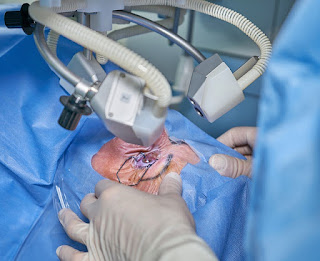Intraosseous Skull Cavernous Hemangiomas: Case Report
Primary intraosseous cavernous hemangiomas (PICHs) is a rare hemangioma in the skull. The diagnosis and treatment need to be coordinated by related specialties, in which the gold standard for diagnosis is histopathology. The clinical case is a 72-year-old male patient with a parietal frontal hemangioma originating in the skull, which is an intracranial cavernous
hemangioma. Treatment was consisted of vascular intervention, total cranioplasty, covering with an artificial material and a skin flap. The patient underwent 3 surgeries to remove the tumor, the second time the pathological result was a cavernous hemangioma of the skull.
Hemangiomas are benign soft tissue tumors, usually in the
skin of newborns and children. Hemangiomas may appear in other tissue including muscle, tendon, connective tissue, fatty tissue,
synovial fluid, or bone1
. Hemangiomas are histologically classified
on the basis of vascular channels including capillary hemangiomas,
cavernous hemangiomas, venous or arteriovenous hemangiomas.2-6
In particular, primary intraosseous cavernous hemangiomas can
occur anywhere in the body. PICHs is an extremely rare disease, accounting for only 0.7-1% of bone tumors, and 10% of benign skull
tumors. PICHS are common in middle age (40-50 years old), male/
female ratio is about 3/1 to 2/1.67. PICHS has an unclear pathogenesis, which may be related to a history of trauma.
https://www.stephypublishers.com/mrprs/pdf/MRPRS.MS.ID.000522.pdf



Comments
Post a Comment